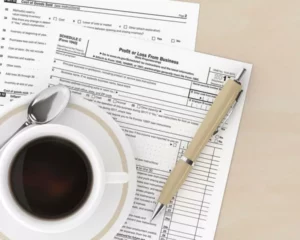Content

Even employees that are not involved in the bookkeeping function my need a copy of the chart of accounts if they code invoices or other transactions. Revenue accounts capture and record the incomes that the business earns from selling its products and services. It only includes revenues related to the core functions of the business and excludes https://www.bookstime.com/ revenues that are unrelated to the main activities of the business. As your business grows, so does the list of accounts you use to categorize finances. You can keep your accounts organized and easy to find by assigning numbers. An effective chart of accounts structure directly or indirectly drives virtually all financial reporting.

They can include a future service owed to others or a previous transaction that created an unsettled obligation. Similar to assets, liabilities are classified as current and noncurrent. Current liabilities are expected to be concluded within 12 months or less while noncurrent liabilities are long-term or greater than 12 months. A chart of accounts is a list of all of your company’s accounts together in one place. Similar to a filing cabinet for your company’s accounting system, it’s used to organize transactions into groups.
What Is a Chart of Accounts?
When setting up a chart of accounts, typically, the accounts that are listed will depend on the nature of the business. For example, a taxi business will include certain accounts that are specific to the taxi business, in addition to the general accounts that are common to all businesses. The chart of accounts provides the name of each account listed, a brief description, and identification codes that are specific to each account. The balance sheet accounts are listed first, followed by the accounts in the income statement.
How should a chart of accounts be numbered?
Chart of accounts numbering
Traditionally, accountants can tell which account a transaction belongs to based on the first digit of the account number; for example, assets accounts for larger businesses are generally numbered 100 to 199 and liabilities are generally numbered 200 to 299. This helps keep books organized.
However, they also must respect the guidelines set out by the Financial Accounting Standards Board (FASB) and generally accepted accounting principles (GAAP). In most cases, you can map your GL accounts to a somewhat standard set of categories. Travel & Related, Sales & Marketing, Professional Services, Facilities & Related—these are all mainstays of the CoA and are fairly straightforward. A parent/child structure would nest similar accounts under broad segments within each of these ranges. For example, you might have accounts receivable set up as a parent account labeled 1100 with 1101 for subscription customers and 1102 for service customers.
Why is the chart of accounts important?
When you log in to your account online, you’ll typically go to an overview page that shows the balance in each account. Similarly, if you use an online program that helps you manage all your accounts in one place, like Mint or Personal Capital, what you’re looking at is basically the same thing as a company’s COA. Want help restructuring your CoA and automating your financial reporting process?
Balance sheet accounts tend to follow a standard that lists the most liquid assets first. Revenue and expense accounts tend to follow the standard of first listing the items most closely related to the operations of the business. In some cases, part or all of the expense accounts simply are listed in alphabetical order. A chart of accounts is a list of account names used to label transactions and keep tabs on a company’s finances. Think of it as the filing cabinet for your small business’s accounting system.
What are best practices for maintaining an accurate chart of accounts?
Following best practices for high-level account numbering is a good starting point. But you have to go a step further and decide what level of granularity is necessary in each account category. But the only way you can focus on looking forward is if your foundation for financial reporting is rock solid. And that starts with building the best chart of accounts (CoA) structure for your business.

They also don’t have a retained earnings account as net income at the end of the year is distributed to the capital accounts. That doesn’t mean recording every single detail about every single transaction. You don’t need a separate account for every product you sell, and you don’t need a separate account for each utility.
Common Account Types
Most small businesses initially set up their accounting to suit their tax accountant. As the company grows, GAAP-based financials are needed for the banks, investors, and agencies like bonding companies. “I don’t think I’ve ever looked at that,” he told me as we looked over his accounts. I could see the light bulbs going on as I showed him how his sales invoice https://www.bookstime.com/articles/chart-of-accounts-numbering lines were all configured to flow to a single sales account in his chart of accounts. With such a simplistic accounting structure, his financials were unable to provide detail about his five distinct revenue streams. The best chart of accounts structure is the one that perfectly aligns with how your business operates and how you want to analyze it.

If you acquire another company, a key task is shifting the acquiree’s chart of accounts into the parent company’s chart of accounts, so that you can present consolidated financial results. This process is known as mapping the acquiree’s information into the parent’s chart of accounts. Good month-end financial reports are made accurate with large non-cash journal entries. For example, if wages earned from October are paid on November 7, a journal entry must be posted to move that November 7 cash expense to October 31, to make October financials accurate. As an aside, for companies subject to US tax regulations, Meals is an example where you’ll want an easy way to give your tax accountant a stand-alone total amount at year-end. If you choose to spread Meals across relevant categories, you’ll want to still keep them in discrete accounts within each category.
What are the five types of accounts?
If you’re booking payroll entirely to OpEx, you might be understating your cost of revenue and boosting your reported margins in the process. That’s why you have to think carefully about what exactly to include in cost of revenue compared to OpEx when building your CoA structure. The parent/child approach organizes your financial statements but comes with limitations. As your company grows, the total number of accounts in your GL grows. And as you add new accounts, it’ll become increasingly difficult to go back and slot new numbers into your CoA. Suddenly, you’re dealing with a mess of sub-accounts under your parent account and unnecessarily complicating your general ledger.
- The parent/child approach organizes your financial statements but comes with limitations.
- Reliance on any information provided on this site or courses is solely at your own risk.
- To make it easier for readers to locate specific accounts, each chart of accounts typically contains a name, brief description, and an identification code.
- Want help restructuring your CoA and automating your financial reporting process?
While some countries define standard national charts of accounts (for example France and Germany) other countries do not (for example the United States or United Kingdom). In the European union, most countries codify a national GAAP (consistent with the EU accounting directive) and also require IFRS (as outlined by the IAS regulation) for public companies. The former often define a chart of accounts while the latter does not. However, since national GAAPs often serve as the basis for determining income tax, and since income tax law is reserved for the member states, no single uniform EU chart of accounts exists. It’s common for organizations to structure their expense accounts by business function.
REVENUE
It enables you to send online invoices from the desktop or app as soon as the job is done. NetSuite’s powerful reporting makes it easy to produce any kind of financial statement or to provide a snapshot of your financial performance. There are several software solutions that can help automate and manage the chart of accounts. The chart of accounts (CoA) is an important tool for any financial organization. The following is an example of some of the accounts that might be included in a chart of accounts.
To make it easier for readers to locate specific accounts, each chart of accounts typically contains a name, brief description, and an identification code. Each chart in the list is assigned a multi-digit number; all asset accounts generally start with the number 1, for example. Cleaning up the list of accounts in your GL may not seem like the most exciting task. But the cost-benefit of restructuring your chart of accounts can be massive. In most cases, it’s a low-lift project that sets the stage for significantly improved financial reporting. And that’s what gives you the foundation to make strategic finance a core part of your business.
Use account numbers in your chart of accounts in QuickBooks Online
However, if you do find yourself needing to make changes, QuickBooks provides a step-by-step rundown as well as an instructional video of how to do so. Making duplicate categories or accidentally filing an expense in the wrong category are common bookkeeping mistakes. You’ll want to keep your chart of accounts as straightforward and organized as possible.
- At that point, further detail may be more harm than help and lead to inaccurate accounting.
- It makes keeping track of sales easy and also helps determine how much of your assets are easily liquidatable.
- Each of these accounts is identifiable by a number, name, and description that is assigned to it on the chart.

